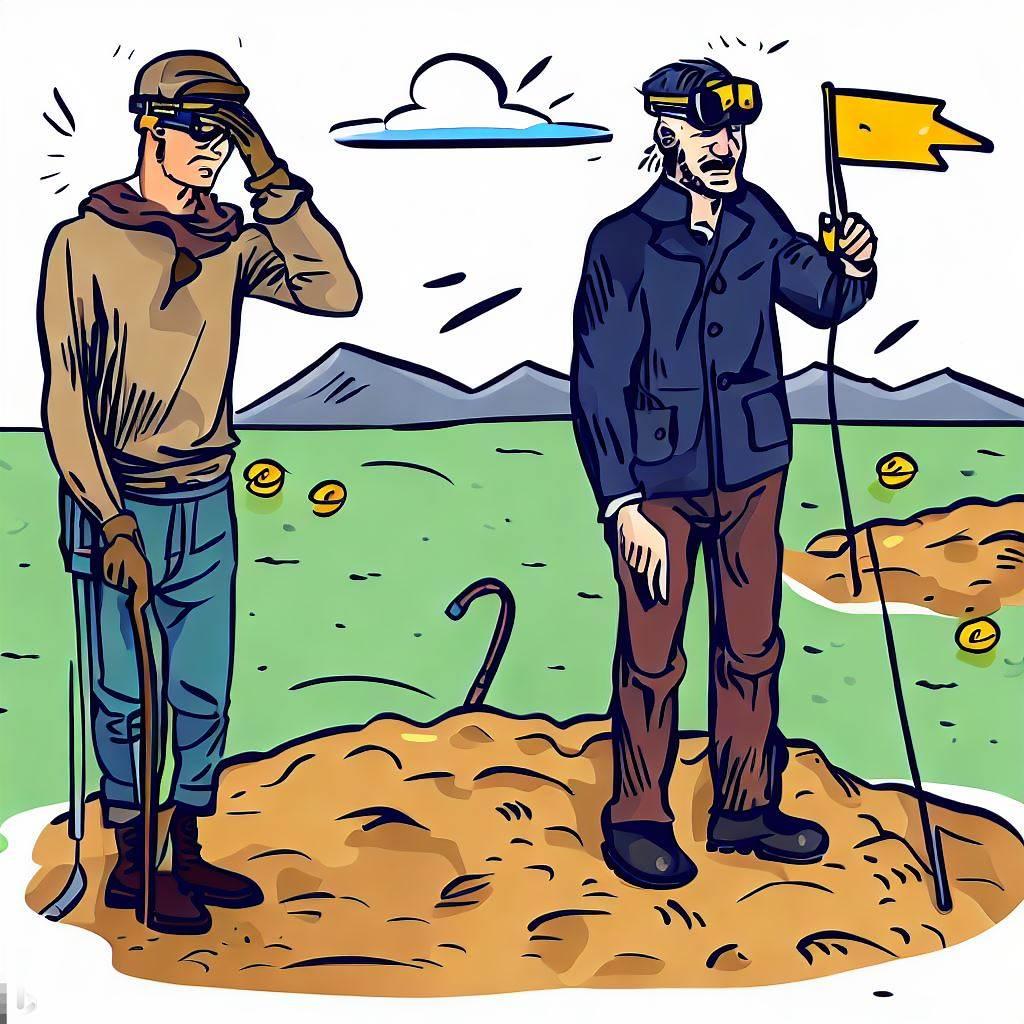The minefield activity is a fun and engaging team-building exercise that can help to build trust and improve communication skills in participants. The activity involves pairs of individuals, with one team member being blindfolded and the other acting as a guide. The pair must then work together to navigate a simulated minefield, using only specified communication techniques.
Why this is a great exercise
The benefits of the minefield activity are numerous. Firstly, it is a great way to build trust between team members. When the blindfolded team member is dependent on their partner for guidance, they must trust that their partner will give them accurate instructions to navigate the minefield safely. This can help to foster a sense of trust and teamwork between the two individuals.
Secondly, the activity can also help to improve communication skills. The communication techniques specified for the activity, such as using only the words “left,” “right,” “forwards,” and “backwards,” can be challenging to follow. However, this challenge can help individuals to become more aware of how they communicate with others and encourage them to communicate more clearly and effectively.
To get the most out of the activity, it is essential to ensure that everyone is engaged and actively participating. This can be achieved by encouraging individuals to take turns being blindfolded and guiding their partner through the minefield. It is also important to provide feedback and encourage individuals to reflect on their communication skills and how they can improve them.

How to do the minefield activity
This is a step-by-step guide for conducting the minefield activity:
- Set Up the Minefield: Choose a suitable location for the activity, either indoors or outdoors, with enough space for pairs to navigate. Place various obstacles in the designated area, such as cones, chairs, ropes, or any other safe objects to create a simulated “minefield.”
- Form Pairs: Divide participants into pairs. Each pair will consist of one blindfolded team member and one guide.
- Explain the Rules and Communication Techniques: Briefly explain the objective of the activity: The blindfolded team member must navigate the minefield with the guidance of their partner, using only specified communication techniques. Specify the communication techniques allowed, such as using only the words “left,” “right,” “forwards,” and “backward.” You can also add twists to the communication techniques, for example, the blindfolded team member must only do the opposite of the spoken command. Ensure that both participants understand and follow these rules.
- Blindfold, Assign Roles, and start the activity: Have one team member in each pair put on a blindfold. The other team member will be the guide. Place the blindfolded team members at the starting point of the minefield. Instruct the guides to stand outside the minefield and provide instructions to their blindfolded partners to help them navigate safely.
- Rotate Roles: After a set amount of time (e.g., 3-5 minutes), have the pairs switch roles. The guide becomes the blindfolded team member, and vice versa.
Debrief
After all pairs have completed the activity, gather the participants for a debrief session. Ask questions about their experiences, challenges faced, and insights gained during the activity. Encourage participants to share their thoughts on trust, communication, and teamwork. Facilitate a discussion on the importance of trust in effective communication and how clear and concise communication can improve teamwork and relate the insights from the activity to real-life situations where trust and effective communication are essential.
Here are some debriefing questions that can be useful:
- What did you learn from this activity about trust and communication?
- What challenges did you encounter while blindfolded, and how did you overcome them?
- How did you feel when you were guiding your partner through the minefield? What communication techniques did you use to ensure that your partner was safe?
- How did you feel when you were blindfolded? How did you feel about being dependent on your partner for guidance?
- What insights did you gain about your communication style during the activity? How could you improve your communication skills?
Remember to create a safe and supportive environment throughout the activity and debrief session to ensure a positive and enriching experience for all participants. The minefield activity is an excellent opportunity for team building and personal growth, fostering better communication and trust among participants.
Conclusion
In conclusion, the minefield activity is an excellent way to build trust and improve communication skills among team members. By working together to navigate a simulated minefield using only specified communication techniques, participants can learn to trust and communicate more effectively with each other. It is a fun and engaging activity that can be adapted to suit different group sizes and settings, making it an excellent choice for team-building activities.


